Originally from Mexico, Viviano Villarreal Buerón is a young architect with a rebellious soul who seeks to venture beyond the comfort zone. After working with OMA for five years, Viviano has taken up the challenge to set up his own practice, Mass Operations, simultaneously in his home city and in Hong Kong. Sylvia Chan writes.

July 20th, 2015
Viviano, you set up Mass Operations in November 2014 after working with OMA for five years. Could you tell us why you decided to set up your own practice?
It’s a challenge, and an ambitious one. I have been constantly challenging myself throughout my career. I see this ‘affinity for challenge’ as coming from a deep sense of insecurity – a healthy insecurity. I always ask myself: Am I good enough to do a certain thing? I would challenge myself every time when I feel like I am in the comfort zone. After surpassing each challenge, you gain knowledge and experience, and also a sense of validation and confidence. The work at OMA is fascinatingly striking and thought provoking, but after five years I started to feel comfortable and realised setting up my own practice was the next step.

Cultural Centre Chapultepec in Guadalajara Mexico
Why did you name your practice Mass Operations?
Most design firms today go by their owners’ names, an acronym of the names of their partners, or a somewhat banal play of words with architecture or construction references. I found these mundane, and I wanted the name of my practice to stand for something, not someone; I wanted it to describe a form or a way of working, not who is working. Mass Operations states exactly what we do and how we do it. It represents our work approach. It says, “We are Designers that Operate with Mass. Each design problem is approached by questioning what kind of Operation will solve this problem.” We concentrate on making that Operation as simple and strong as possible.
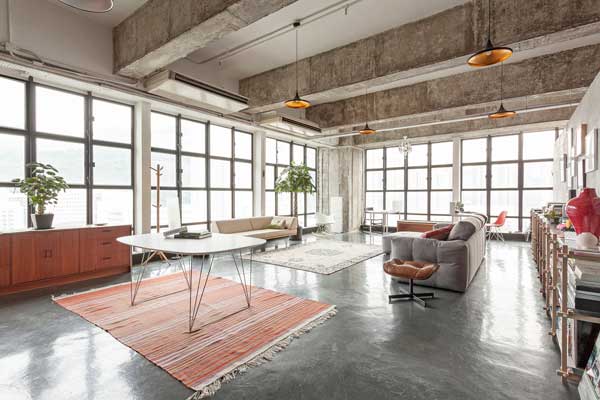
Art Collector’s loft in Chai Wan
We are interested in your design approach – could you tell us about it? How has your experience at OMA or your personal experience influenced it?
It is very much influenced by my experience at OMA and tempered by my cultural connections to Latin America, Europe and Asia. Each project, in its conception, is approached as an island – an individual entity with its own unique needs, constraints, and characteristics. We then carry out a thorough research to find a unique and interesting narrative within the social and economic context of the project, to identify the unique design problems or opportunities. We then formulate an exhaustive set of design responses which intend to solve the problems or take advantage of the opportunities, and we finally select a design with semantic precision and simplicity, as well as effectiveness, in solving the problems. We look for feasibility and ultimately, beauty. Narrative, Efficiency and Beauty are qualities we look for in each project.
This design method would not be unfamiliar to anybody who has worked with OMA. We have, however, added to it the idea of ‘Operation’, and we aim to explain each project and our actions undertaken through a single and concise sentence. I think architects, designers and artists don’t explain the inner working concepts or raison d’être of their projects enough, and this has led to the misunderstanding of their work. I think this is something to avoid.
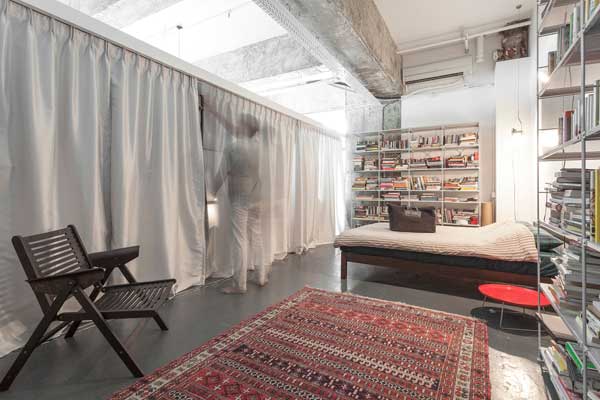
Art Collector’s loft in Chai Wan
Where do you get inspiration for your design?
It is hard to pinpoint an overall source of inspiration. Each project develops different interests, which eventually lead to moments of realisation or inspiration that align with the goals for the project. For example, in our Cultural Centre Chapultepec in Guadalajara Mexico, we wanted to free the ground for the public. We needed the building to hover over the ground and this resulted in large cantilevers, a sort of building calisthenics. We solved the problem by creating a structural façade, which used a triangle profile inspired by Mexican houses of the 1920s. Our landscape proposal based on ripples brought the opportunity to create a half sunken basement, which enabled us to build two instead of one parking level at the same cost. Each project has its opportunities and moments of inspiration. You just need to work hard to find them.
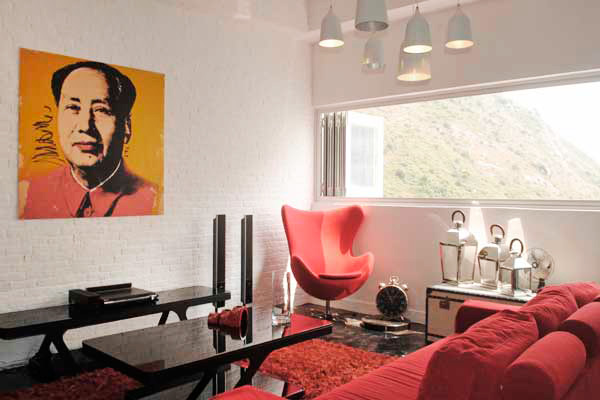
Art Collector’s loft in Chai Wan
You have completed two loft projects – the Bachelor’s loft in Ap Lei Chau and the Art Collector’s loft in Chai Wan – since you set up Mass Operations. Why are you interested in this typology? Is there something uniquely Hong Kong about this typology?
I think it’s unique to dense cities where almost all available housing are underwhelming cookie cutter spaces. When land is cheap, one can create his own space. When land is expensive, one can only go with what is available. Urban density paired with capitalism can form a two-edged sword. The loft typology is the refusal of taking no action. We are interested in the typology because of its individuality and efficiency. Clients that are looking for a loft space are making a strong effort to do something different that better suit his/her needs. The marriage of individuality and efficiency connects with our design spirit.
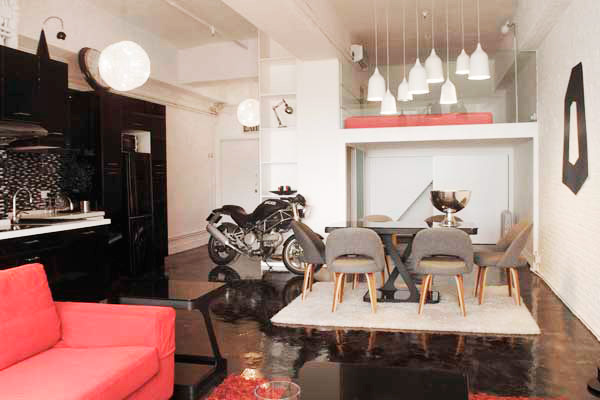
Art Collector’s loft in Chai Wan
Can you tell us about the Raja Luxe Showroom? It is a space for a third generation bespoke Indian tailor with a history in Hong Kong going back 60 years, and apparently you tried to merge traditional and contemporary elements in the project. How do we respect the tradition and at the same time make breakthroughs in architecture?
The Raja Luxe Shworoom project happened at a unique moment when the client was looking to make a substantial change in their business. In the last 60 years, they had been operating in an 80m2 space in Kowloon, and they were preparing to move into a 300m2 showroom. We had to understand the lineage of the business and where it wanted to go. Our client has deep roots in the Indian tailoring tradition and was evidently influenced by the English colonials, as well as by the cultural diversity of contemporary Hong Kong. The space we have designed accommodates the renowned bespoke suits created by the family, and also a new line of intricate, high-end traditional Indian formal garments. We had to take into account all these elements in the project to create one cohesive and understandable line. I remember convincing my client to ward off Hong Kong and Chinese cultural elements in the project meant to attract that specific clientele. I assured my client: all clientele comes to him not for his Hong Kong or Chinese elements, but for his Indian and English heritage, which we should embrace. And so we did. I think the project was very successful in that sense.
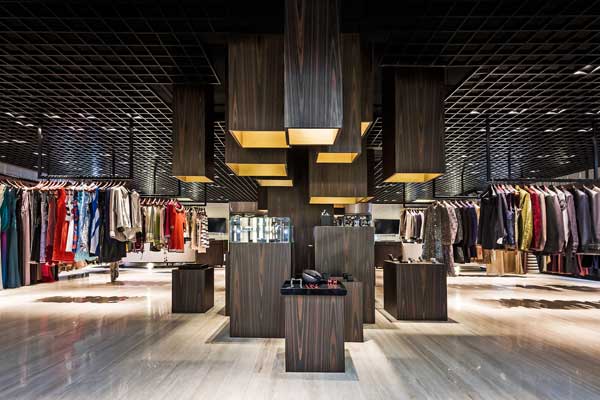
Raja Luxe Showroom
You split your time between Mexico and Hong Kong now. What are the challenges and opportunities of starting up an office in Asia and Latin America at the same time?
It is an ambitious challenge. I find myself working two shifts, which is incredibly productive. My day usually starts at 9 am and finishes at 3 am. It is definitely something I couldn’t have embarked on had I not learned the design and business practices at OMA in Asia. It requires serious clients, who value both your time and theirs, who have full trust in you. These clients are hard to find but are definitely the ones you want.
How big is your team now? What are your ambitions, and where do you see Mass Operations in 10 years?
At the moment we are three, with Rodrigo Vega based in México, and Daniel Gonzalez based in Hong Kong. We work with a large network of construction and design collaborators in both regions. We are aiming to be six by the end of the year, and we’ll be just 12 months old by then!
We currently have a healthy amount of running and potential projects in Hong Kong and Mexico. In Asia our work has focused primarily in Hong Kong. We want to keep engaging in commercial and residential projects here, while looking into China and Southeast Asia for larger scale architecture projects. We have some interesting potentials in India and Thailand, where I’ll be in the next two weeks. We are also developing some leads in Australia. For Latin America our work is heavily focused in the North and South of Mexico. We will continue to work in these areas and México City. In 10 years with no doubt we would like to be stronger in our current locations and develop a US presence.
Mass Operations
massoperations.com
A searchable and comprehensive guide for specifying leading products and their suppliers
Keep up to date with the latest and greatest from our industry BFF's!

Marylou Cafaro’s first trendjournal sparked a powerful, decades-long movement in joinery designs and finishes which eventually saw Australian design develop its independence and characteristic style. Now, polytec offers all-new insights into the future of Australian design.

Sub-Zero and Wolf’s prestigious Kitchen Design Contest (KDC) has celebrated the very best in kitchen innovation and aesthetics for three decades now. Recognising premier kitchen design professionals from around the globe, the KDC facilitates innovation, style and functionality that pushes boundaries.

In the pursuit of an uplifting synergy between the inner world and the surrounding environment, internationally acclaimed Interior Architect and Designer Lorena Gaxiola transform the vibration of the auspicious number ‘8’ into mesmerising artistry alongside the Feltex design team, brought to you by GH Commercial.
The internet never sleeps! Here's the stuff you might have missed

A school in India, designed by Vijay Gupta Architects, showcases the importance of the natural world by engaging and educating the young.

Focusing on facade and green design, this pair of office blocks is designed to meet the most contemporary demands of workplace design.